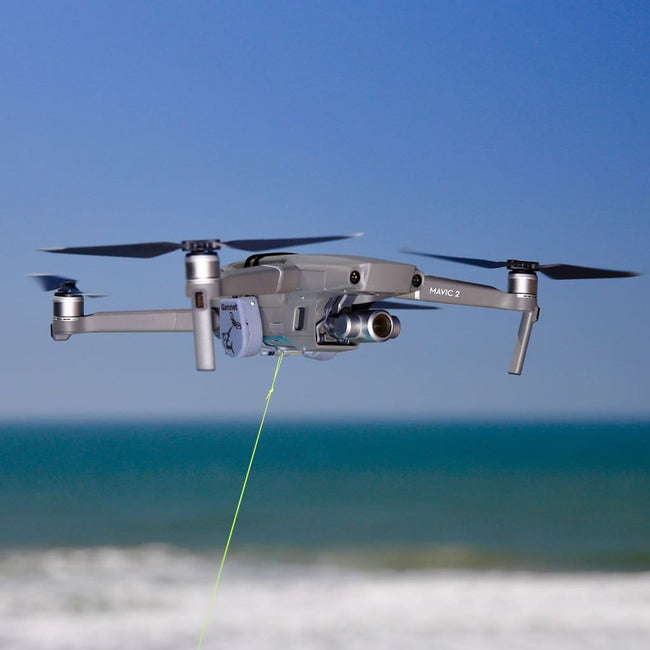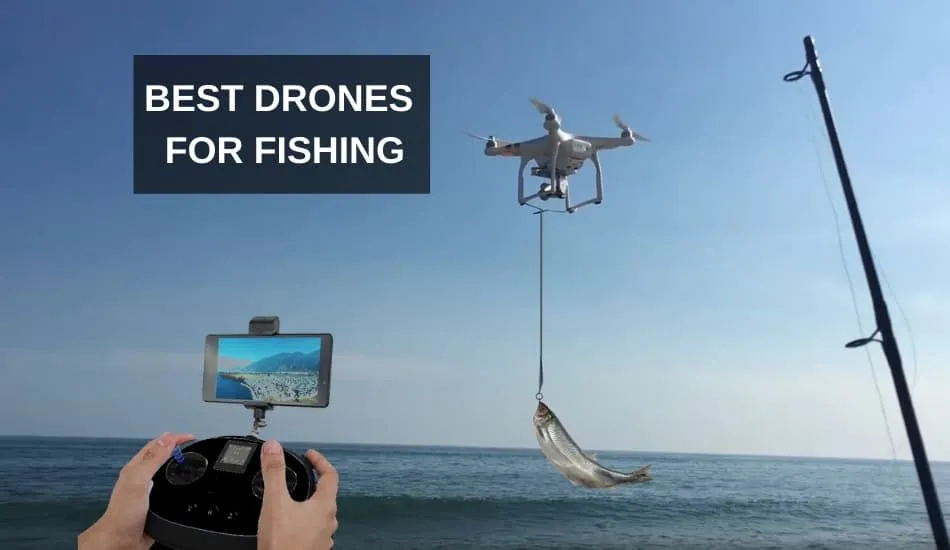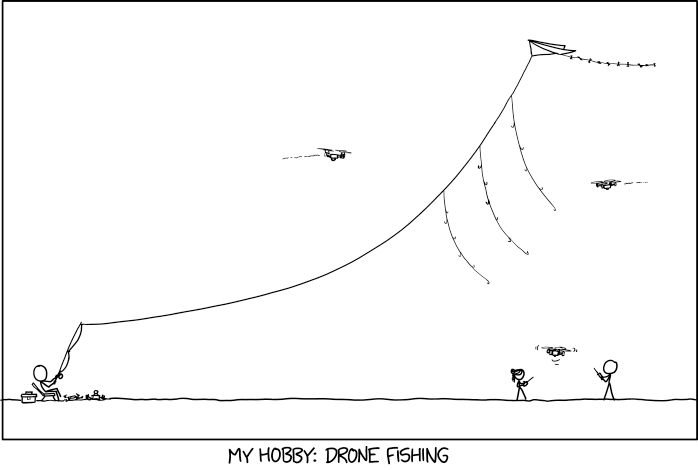
If you are an avid fisherman and live in Australia, you can now use a drone to get an aerial view of the waters around your property. A drone can have many features such as an angle adjustable camera and GPS positioning system. You can also buy fishing line that you can use to fish. These lines are highly stable and reliable. One example is the SKY RIGGER drone.
SKY RIGGER is an unmanned fishing line.
The SKY RIGGER fishing line system for drones allows you fly fish and is flexible. It has two rotating leg clamps, which can be mounted to many drone models. The release mechanism is designed with a bayonet-style connection and a cam-lock arm to open the line clamps quickly. Unlike other drones, the Sky RIGGER requires no batteries and can accommodate all fishing techniques safely.
The SKY RIGGER comes with an automatic release mechanism that allows you to let go of the line when a fish catches your fly. You can also manually let go of the line by using your rod or hand. This feature is available for all models of the SKY RIGGER. It is recommended that you purchase a Phantom 3 before purchasing the new SKY RIGGER. The following are some pros and con's of the new line:
It has a mechanical payload release
The mechanical payload release is a key feature of a drone. Many of them allow anglers to quickly and easily release their fishing line. Some models lack a release mechanism. To remove the drone from the fishing line, the user must "yank” the line. This can be frustrating, especially for people who aren’t comfortable using their fingers to release the line.

A payload release mechanism is also an important feature. The payload should be able to release the drone's line when the fish is struck. Practice catch and release fishing before you attempt this method. This is because the fish can't be simply pulled to shore and released into the sea. The DJI Phantom drone has been reported to have excellent results by many people. However, this technology is not yet comparable to other fishing drones.
It also has a GPS position system
Rippton is a joint venture of Australia and Holland that specializes exclusively in technology-oriented fishing gear. Its goal is improve anglers' success by creating products that enhance the fishing experience. Rippton's Mobula drone features a GPS positioning system and a remote release. The Mobula can be used to store bait at the surface and provide resistance against kite clips. It is also environmentally friendly.
It is light at 3 pounds and can take off for 18 minutes. The high-tech GPS system allows it to be controlled up to 2,000 feet away. It is capable of flying at 1000 meters (or half a kilometer) range and has intelligent flight modes. Its point feature allows it high-quality images of the surrounding environment. You can enjoy stunning views of fish through its high-resolution lens.
It comes with a failsafe feature
Aerokontiki has an emergency feature that allows it to monitor the battery level and release the fishing line if necessary. It will return to dry ground if it experiences a battery failure and continue its mission. It is equipped with industrial-grade flight controllers that can be used anywhere, without the need for calibration. The drone can be used in even the most challenging water spots, and is waterproof.

FAQ
What is the difference in a quadcopter from a hexacopter.
Quadcopters are four-rotor helicopters that fly like traditional helicopters. It is equipped with four rotors, each of which can rotate independently. The quadcopter's quadcopter counterpart, the hexacopter, has six instead of four. Hexacopters can be more stable and maneuverable that quadcopters.
What is the maximum height you can fly a drone with no license?
There is no restriction on the height at which you can fly a drone according to the FAA. They do require that you register your unmanned airplane system (UAS), which includes registration number, model number, weight, size and manufacturer's names, as well as other information.
Can I fly my drone indoors
Yes, it is possible to fly your drone indoors. There are only a few things you need to do: Make sure your home is free of obstacles and hazards. For instance, avoid flying near windows and doors, heating vents, heating units, air conditioning units, electrical outlets or water pipes.
What is the law regarding drones flying over private property
Recently, the FAA released new rules for commercial drone operations. These rules apply only to UAVs weighing less than 55 pounds and flying below 400 feet above ground level. Commercial operators need to register with the FAA in order to obtain a license. They will also require permission from local authorities to operate near airports and other restricted areas.
Where are Drones Banned?
The FAA bans drones flying in restricted areas such as airports, stadiums or sporting events, nuclear power stations, hospitals, prisons, and other sensitive areas. However, they allow them to fly nightly using GPS technology.
Can I fly my drone around my neighborhood?
Yes! These are called UAVs, or unmanned aerial vehicles. There are many kinds of drones today. They range from small quadcopters, to large fixed-wing planes. The FAA recently released new rules for commercial UAV use, meaning that they are now legal to fly for business purposes. You should be aware, however, that UAVs flying near airports can cause interference with air traffic control systems. To operate one, you will need to obtain permission from the local authorities.
Statistics
- According to ZipRecruiter, the minimum hourly wage of drone pilots is $20. (thedroneu.com)
- According to the multiple listing service (MLS), houses and apartments with drone photographs are up to 68 percent more likely to sell than those without pictures. (thedroneu.com)
- According to industry research from ZipRecruiter , there are 10 cities where the typical salary for a Drone Pilot job is above the national average. (dronesgator.com)
External Links
How To
How to Fly Drones with Beginners
A drone refers to a remote-controlled aircraft designed for aerial photography, surveillance and scientific research. The technology behind drones has been around since World War II. However, commercial use began in 2010 when DJI released their Phantom series of quadcopters. Since then, there have been many different types of drones available, from beginner-friendly models like the Parrot AR Drone 2.0 to professional-grade multi-rotor craft like the DJI Mavic Pro.
There are many options for flying a drone.
-
Remote control: This uses a remote control device that attaches to your hand and allows you control the drone along its flight path. There are two main types, On/Off switches (like radios) and joysticks.
-
Manual Control- This allows you to control your drone remotely via GPS coordinates. The app will provide instructions and help you to locate the drone.
-
Autonomous Flight – This is when the drone handles all the piloting tasks. It allows the drone to fly independently without any human intervention. For the autonomous flight to occur, the drone must have a built-in camera and sensors capable of capturing images and data.
-
Triggered Flight - This method is similar to manual control, except the pilot manually sets up a preprogrammed route, and the drone follows that route until it reaches the endpoint. Once the programmed route has been completed, the drone returns to the base automatically.
-
Landing Gear: Some drones have landing gear that allows them safely to land in case they lose power or run low on battery.
-
Goggles - Pilots may wear goggles to shield themselves from flying debris.
-
Camera - Certain drones come with cameras that allow you to take photos and videos from high above.
-
Obstacles-Some drones come with obstacle avoidance devices that keep them from hitting obstructions.
-
Speed - Some drones reach speeds exceeding 40 mph.
-
Battery Life - Most drones are capable of lasting between 20 minutes and three hours, depending on the power that you use.
-
Distance - Some drones can travel up 30 miles depending on the model.
-
Power source – Some drones require external power sources, others require internal batteries.
-
Weight - Some drones can be as light as 1 pound while others can reach 4 pounds.
-
Size - Drones range from small devices that fit in one's palm to large crafts that weigh more than 50 pounds.
-
Price - High-end drones can go for thousands of dollars, while low-cost models start at $100.